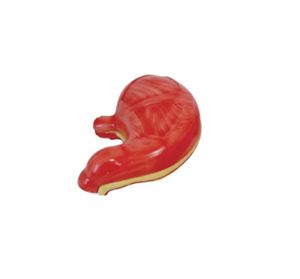Gastric anatomical model plays a vital role in medical education, clinical training and scientific research. A high-quality model can not only help medical students better understand and grasp the anatomy of the stomach, but also provide precise operational guidance for clinicians, and even play an important role in the field of scientific research. So, what are the characteristics of a gastric anatomy model that meets medical needs?
First, the authenticity and accuracy of the model is crucial. The anatomy of the stomach is complex, including the four layers of the stomach wall (mucosal layer, submucosal layer, muscular layer and outer membrane), the greater and lesser curvature of the stomach, the anterior-posterior wall, the entrance cardia and the exit pylorus. An anatomical model of the stomach that meets medical needs should be able to accurately reflect these structures, even including details such as the distribution of ligaments, blood vessels and nerves in the stomach. Such a model can enable students to form a correct anatomical concept in the learning process and lay a solid foundation for clinical operation.

Second, the durability and operability of the model are also key factors. Medical education and clinical training require repeated use of the model, so the model must be able to withstand frequent handling and cleaning. At the same time, the design of the model should be easy to operate, can simulate the real surgical process, and help doctors improve surgical skills.
To sum up, a gastric anatomical model that meets medical needs should have the characteristics of authenticity, accuracy, durability and operability, and be able to innovate continuously with the continuous development of medical technology. Such a model can not only help medical students better understand and master the anatomy of the stomach, but also provide precise operational guidance for clinicians, and promote the continuous development of medical education and clinical practice.
